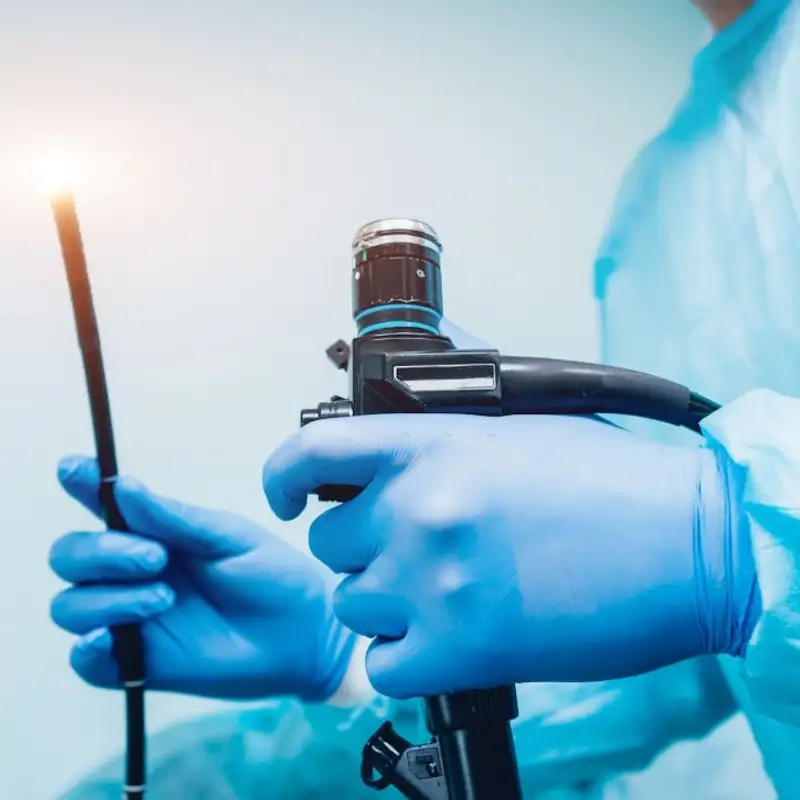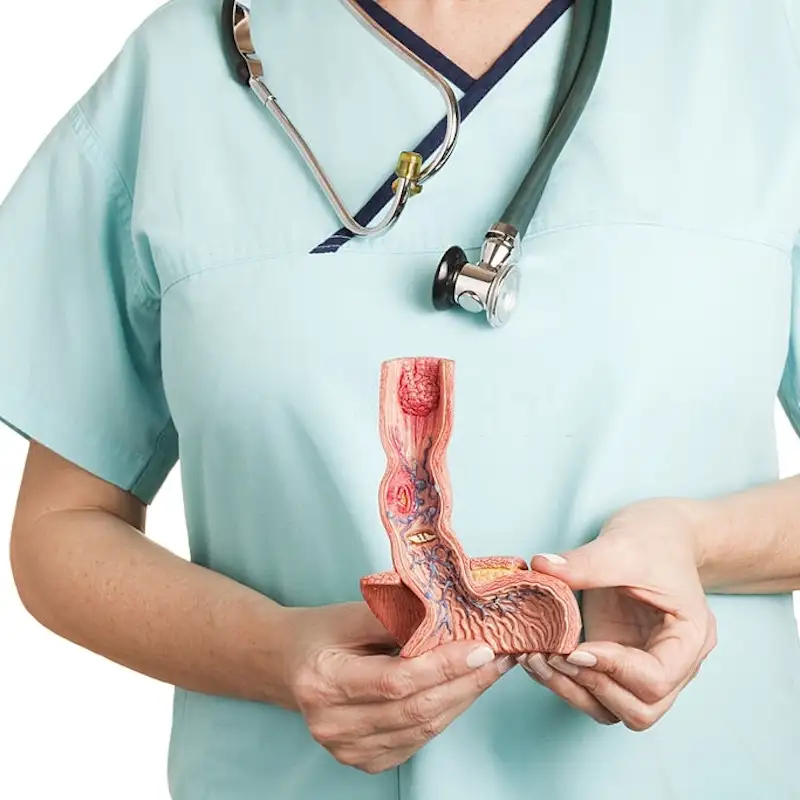Esophagogastroduodenoscopy (EGD)
Upper Gastrointestinal Endoscopy
An upper gastrointestinal (UGI) endoscopy is a procedure that allows your doctor to look at the interior lining of your esophagus, your stomach, and the first part of your small intestine (duodenum) through a thin, flexible viewing instrument called an endoscope. The tip of the endoscope is inserted through your mouth and then gently moved down your throat into the esophagus, stomach, and duodenum (upper gastrointestinal tract).
Since the entire upper gastrointestinal (GI) tract can be examined during this test, the procedure is sometimes called an esophagogastroduodenoscopy (EGD).
Using the endoscope, your doctor can look for ulcers, inflammation, tumors, infection, or bleeding. Tissue samples can be collected (biopsy), polyps can be removed, and bleeding can be treated through the endoscope. Endoscopy can reveal problems that do not show up on X-ray tests, and it can sometimes eliminate the need for exploratory surgery.
Why is a Upper Gastrointestinal Endoscopy Performed?
An upper gastrointestinal endoscopy may be done to:
- Find problems in the upper gastrointestinal (GI) tract. These problems can include:
- Inflammation of the esophagus (esophagitis).
- Gastroesophageal reflux disease (GERD).
- A narrowing (stricture) of the esophagus.
- Barrett’s esophagus, a condition that increases the risk of developing esophageal cancer.
- Hiatal hernia.
- Ulcers.
- Cancer.
- Find the cause of vomiting blood (hematemesis).
- Find the cause of symptoms, such as upper abdominal pain or bloating, difficulty in swallowing (dysphagia), vomiting, or unexplained weight loss.
- Find the cause of an infection.
- Document the healing of stomach ulcers.
- Look at the inside of the stomach and upper small intestine (duodenum) after surgery.
- Look for a blockage in the opening between the stomach and duodenum (gastric outlet obstruction).
An Endoscopy may also be done to:
- Check for an esophageal injury in an emergency (for example, if the person has swallowed poison).
- Collect tissue samples (biopsy) for examination in the laboratory.
- Remove growths from inside the esophagus, stomach, or small intestine (gastrointestinal polyps).
- Treat upper gastrointestinal bleeding, including bleeding caused by engorged veins in the esophagus (esophageal varices).
- Remove foreign objects that have been swallowed.
- Look for bleeding that may be causing a decrease in the amount of oxygen-carrying substance (hemoglobin) found in red blood cells (anemia).
How to prepare for a Upper Gastrointestinal Endoscopy.
Before having an upper gastrointestinal endoscopy, tell your doctor if you:
- Are allergic to any medicines, including anesthetics.
- Are taking any medicines.
- Have bleeding problems or take blood-thinning medicine, such as warfarin (Coumadin).
- Have heart problems.
- Are or might be pregnant.
- Are diabetic and take insulin.
- Have had surgery or radiation treatments to your esophagus, stomach, or the upper part of your small intestine.

